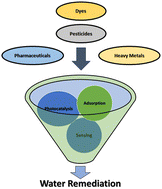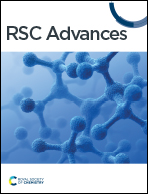Advances in metal–organic frameworks for water remediation applications
Abstract
Rapid industrialization and agricultural development have resulted in the accumulation of a variety of harmful contaminants in water resources. Thus, various approaches such as adsorption, photocatalytic degradation and methods for sensing water contaminants have been developed to solve the problem of water pollution. Metal–organic frameworks (MOFs) are a class of coordination networks comprising organic-inorganic hybrid porous materials having organic ligands attached to inorganic metal ions/clusters via coordination bonds. MOFs represent an emerging class of materials for application in water remediation owing to their versatile structural and chemical characteristics, such as well-ordered porous structures, large specific surface area, structural diversity, and tunable sites. The present review is focused on recent advances in various MOFs for application in water remediation via the adsorption and photocatalytic degradation of water contaminants. The sensing of water pollutants using MOFs via different approaches, such as luminescence, electrochemical, colorimetric, and surface-enhanced Raman spectroscopic techniques, is also discussed. The high porosity and chemical tunability of MOFs are the main driving forces for their widespread applications, which have huge potential for their commercial use.

- This article is part of the themed collections: Metal-Organic Frameworks: Celebrating the 2025 Nobel Prize in Chemistry and 2024 Reviews in RSC Advances


 Please wait while we load your content...
Please wait while we load your content...